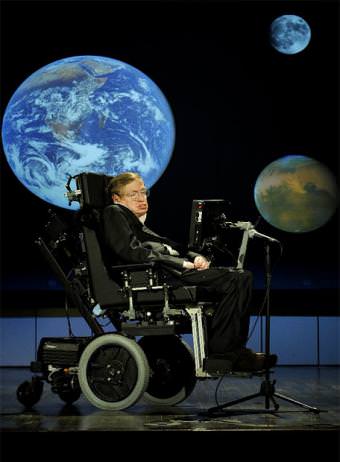We know that Earth will die.
Even if we beat global warming, and survive long enough to face and survive the next ice age, Earth will still die. Even if we build a peaceful civilization, protect the planet from asteroids, fight off mutant plagues and whatever else comes our way, life on Earth will die. No matter what we do, the Sun will reach the end of its life, and render Earth uninhabitable.
So reaching for the stars is imperative. What sounds unrealistic to a great many people is a matter of practicality for people knowledgeable about space. To survive, we must have more than Earth.
A project launched by billionaire Yuri Milner, and backed by Mark Zuckerberg, intends to send tiny spacecraft to our nearest stellar neighbour, the Alpha Centauri system. With an expert group assembled to gauge the feasibility, and with the support of eminent cosmologist Stephen Hawking, this idea is gaining traction.

The distance to the Centauri system is enormous: 4.3 light years, or 1.34 parsecs. The project plans to use lasers to propel the craft, which should mean the travel time would be approximately 30 years, rather than the 30,000 year travel time that current technology restricts us to.
Of course, there are still many technological hurdles to overcome. The laser propulsion system itself is still only a nascent idea. But theoretically it’s pretty sound, and if it can be mastered, should be able to propel space vehicles at close to relativistic speeds.
There are other challenges, of course. The tiny craft will need robust solar sails as part of the propulsion system. And any instruments and cameras would have to be miniaturized, as would any communication equipment to send data back to Earth. But in case you haven’t been paying attention, humans have a pretty good track record of miniaturizing electronics.
Though the craft proposed are tiny, no larger than a microchip, getting them to the Alpha Centauri system is a huge step. Who knows what we’ll learn? But if we’re ever to explore another solar system, it has to start somewhere. And since astronomers think it’s possible that the Centauri system could have potentially habitable planets, it’s a great place to start.


Let’s do this thing.
I like the idea. How would we slow then down when they got there? Or would they just sail past? How much data could we collect with then travelling at about 1/10 the speed of light?
GREAT question! I’m wondering that as well. Anyone on here know?
I suppose the light sail would slow it down a bit as it approached B.
At 1/5 light speed, the probes would cross a distance equal to the diameter of Earth’s orbit in around 80 minutes. I suppose that would be about the time scale for the most interesting observations, supplemented by a bigger volume of less valuable data recorded at greater distances. How much data could a fleet of smartphone-like probes record in 80 minutes? I’m predicting it would actually be a surprisingly large amount.
My biggest concern is how they’re going to beam back the data. The transmitters will need to be very powerful to return a detectable signal from Alpha Centauri.
I wonder if the communication issues could be addressed by having a sort of chain of the probes on their way to Alpha Centauri and getting them to pass the data backwards along the chain rather than one tiny probe having to do the whole job. Since the probes are all tiny they could be quite cheap, and once the laser is finished with the first probe it could then shoot the next etc… You could also then send probes to survey different parts of the system to areas around A, B and Proxima Centauri.
I’m going to bet that communications can be greatly enhanced through the use of either lasers or a tight radio signal focused like a laser.